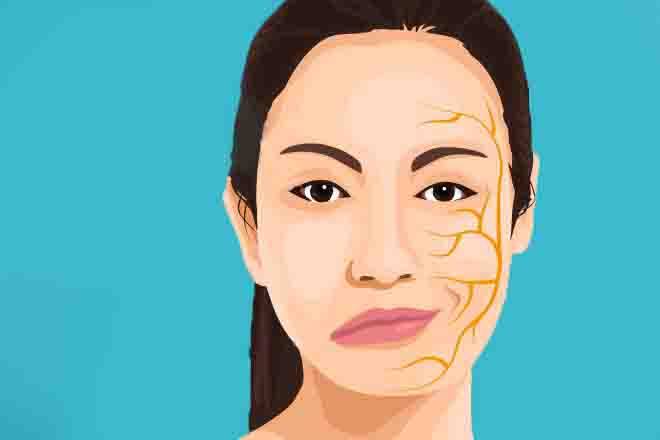Facial palsy is weakness or paralysis of the muscles on one half of the face. It occurs as a result of temporary or permanent damage to the facial nerve . It makes the affected side of the face droop. Facial palsy is commonly called Bell’s palsy when the cause is unknown; in which case , symptoms improve in a few weeks, with complete recovery in about 6 months.
SYMPTOMS OF FACIAL PALSY
The symptoms of Bells palsy generally appear abruptly. You may be fine the previous night and wake up and notice it the following morning. Bell’s palsy can affect any side of the face. In rare cases, it may affect both sides of the face. It is generally marked by droopy appearance of one side of the face , inability to close the affected eye and deviation of mouth.
The following are some of the symptoms which are seen on the affected side of the face:
- Drooling
- Difficulty chewing food
- Decreased sense of taste
- Difficulty in closing the eye or blinking
- Pain or numbness behind the ears or around the jaw
- Twitching of facial muscles
- Increased sensitivity to sound
- Difficulty with facial expressions
- Dry eyes and mouth
- Headaches
- Irritated and watery eyes
RISK FACTORS
Bell’s palsy can happen to anyone at any age. But it seems to occur more often in people with some risk factors. Your risk of developing Bell’s palsy increases if you are:
- Pregnant
- Diabetic
- Have a lung infection
- A Family history of facial palsy
- Recovering from viral infections
DIAGNOSIS OF FACIAL PALSY
Treatment is most effective when administered early. Therefore, it is important to get diagnosed by a doctor as soon as the symptoms appear. The doctor will first perform a physical examination to determine the extent of weakness of the facial muscles and may recommend the following tests:
- Imaging scans (MRI, CT, X-ray)
- Electromyography (EMG)
- Blood tests
TREATMENT
In most cases, the symptoms of facial palsy improve without treatment. However, it may take several weeks or months for the facial muscles to regain normal strength. The inability to close the eye may lead to exposure of the eyeball, dryness, redness, infection and eventually loss of vision. The following home and medical treatment may help in relieving the symptoms of facial palsy
- Physiotherapy
- Facial massage
- Antiviral and pain medications
- Eye care-lubricants
- Surgery to help eye closure
- Injections-Botox or dermal fillers for temporary improvement in eye closure to protect the eyeball till recovery occurs spontaneously
- Devices- Eyepatch (your doctor will train you on the right technique of taping the eye)
- If the facial palsy is permanent, there are various oculoplasty procedures to improve eye closure and facial droop which will protect the eye from exposure and also improve cosmesis.
Even though it resolves eventually in most cases, it is absolutely essential to consult your doctor if you develop any of these symptoms. It is not advisable to self-diagnose facial palsy as the symptoms may be similar to those of other serious conditions, such as a stroke or brain tumor.
DRR Eye Care and Oculoplasty Hospital has been making a mark with its advanced sophisticated infrastructure and facilities. Our experienced team of doctors and nurses ensure that our patients get the best treatment and care. We educate our patients about the treatment they are offered. Visit DRR Eye Care and Oculoplasty Hospital in Karayanchavadi, Chennai for the best treatment in the city.

